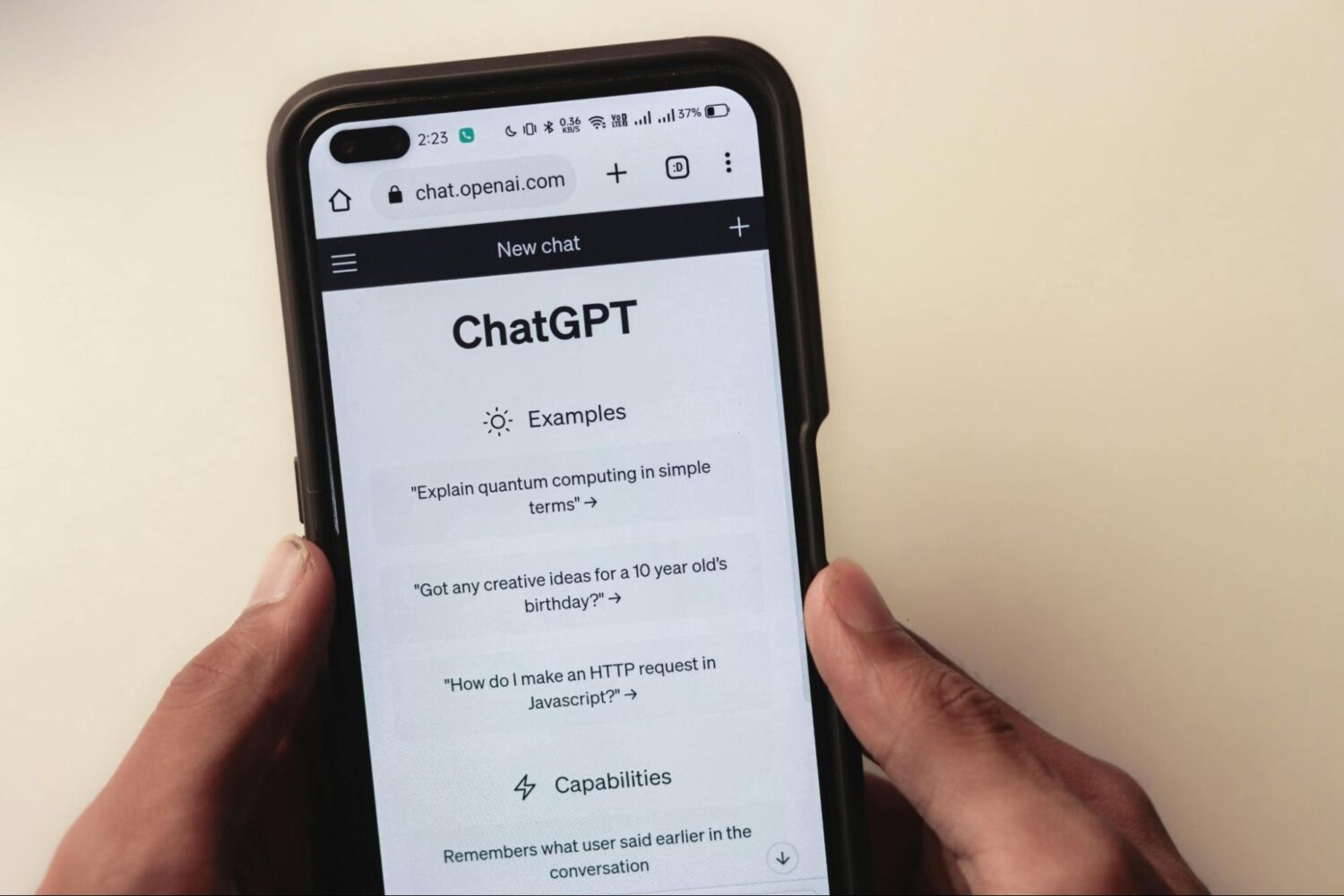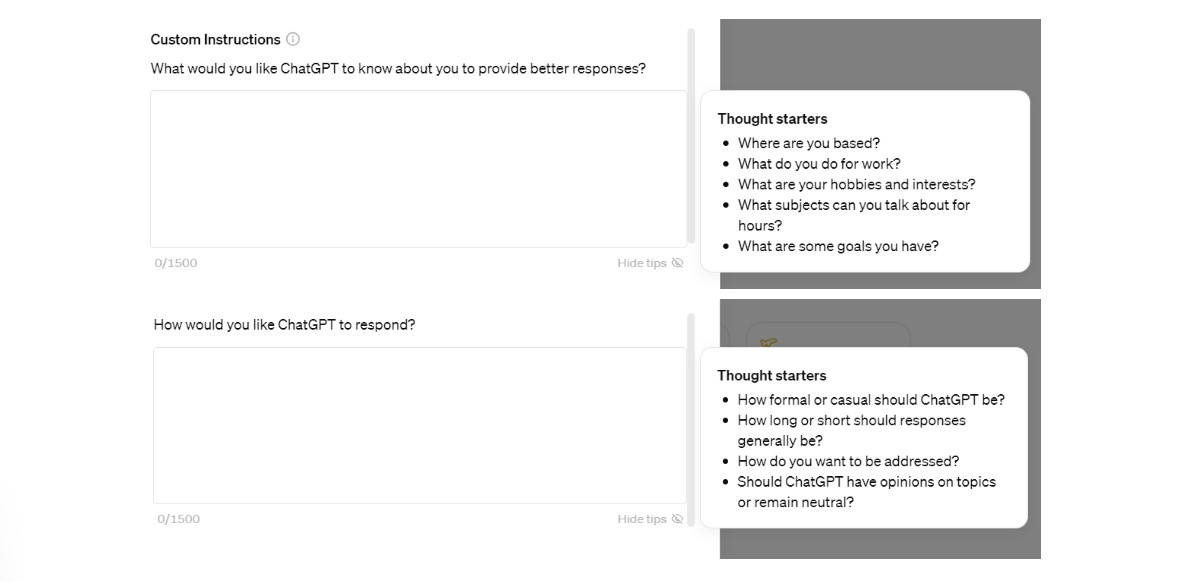
How to make ChatGPT write like a human seems like an impossible request. Nowadays, many have tried ChatGPT, and they all say machine writing is still far behind human writing. While that statement is partially true, proper tips for prompts can elevate your ChatGPT’s answer to several levels.
We have included all the necessary tips to enhance ChatGPT’s writing with clear examples to make them more understandable. Additionally, this article will mention the ethical issues regarding using AI models for human-like writing.
Your journey starts now!
Whenever you want to talk with ChatGPT or other AI language tools, you’ll need “prompts”. So, what exactly is prompt? The prompt is the instructions or requests you enter into ChatGPT to make it answer. It’s like giving out orders in a restaurant so the chefs can start cooking.

What Are ChatGPT Prompts?
However, ChatGPT prompts aren’t limited only to questions and statements. Be as creative as you can with these prompts to enhance ChatGPT’s accuracy and productivity. With proper prompts and enough training, you can even make ChatGPT write like a human.
Mastering ChatGPT to write like a human can feel challenging, but here are 7 proven tips and techniques in 2025 that consistently help users achieve more natural and engaging AI-generated content. Here, TechDictionary has assembled the 7 most effective tips that work almost every time. Let’s check them out now!
Since ChatGPT makes progress based on the information fed to it, the easiest way to elevate its writing is to feed it your writing, from articles and essays to emails and notes. The aim is to serve as a style reference from which ChatGPT can learn.
However, just feeding it is not enough. You have to make sure it understands your writing style by asking it to analyze the submitted text. For example, after pasting your writing samples, add a prompt like the one below:
“Please analyze the characteristics and strengths in my writing and use them for your writing.”
The first lesson anyone learns about working with ChatGPT is to keep prompts as simple and clear as possible. Open-ended questions or prompts with too much jargon can confuse the model, leading to off-topic output.
Instead of only asking for the best air fryer, change the prompt to the air fryer most suitable for a 4-person family without costing much electronic:

AI Writing With Clear Specific Prompts
The generated content even mentions the air fryer’s size, controlling type, and other specific features. The more specific your prompt, the better the result.
Moreover, proofread the prompts twice before hitting the Enter button to avoid grammatical errors or typos. This way, ChatGPT can understand your intention better and give you the highest-quality answer.
When you write for a brand, paying attention to its characteristic tone, style, branding image, and many more is obvious. The same applies when you use ChatGPT to generate content for your or other companies’ brands.
You should inform the AI writing model of all the necessary information about the brand and the product: target audience, suitable writing tone, key messages, etc. It will help ChatGPT’s answers be less generic.

ChatGPT Prompt With Brand Style Guide
Here, instead of asking ChatGPT to describe a general milk tea product, I give it the following requirements: light, funny, and professional writing tone to match the target audience: students between 11-18 years old.
Thanks to that, ChatGPT changed its writing style and added several expressions targeting the children: powering through homework, chilling with friends, between classes, etc.
To make ChatGPT sound like a human, understanding context is crucial. Even when talking with real people, we sometimes need context to grasp the whole situation. So, there’s no reason not to do the same with ChatGPT. Giving it contextual information helps ChatGPT understand your intention more.
Contextual information includes all the details and background relating to your prompt, like the answer’s purpose, target users, and writing tone. You should list all these requirements before the main question for the most focused answer.
When I need an introduction to Caribbean cuisine, here is my prompt:
“Write a catchy and creative intro (about 90 words) for the keyword “Caribbean cuisine.” The introduction will talk about these aspects:
– Overview Of Caribbean Cuisine
– How To Choose the Right Caribbean Beverage for Your Meal
Use human-like, compelling, and catchy sentences that will attract readers and leave a lasting first impression. All sentences MUST NOT START WITH A VERB. DO NOT START WITH QUESTIONS.”
One of the main problems with ChatGPT is that it’s like a patient with short-term memory loss. No matter how much you taught it, everything is gone forever when you create a new chat. So, here is my first advice: Refrain from creating a new chat window as much as possible.
However, for the long-term future, you should take advantage of two features: Custom Instructions and Memory. To access Custom Instructions, click on the Customize ChatGPT tab. A window will pop up like this:

Custom Instructions for ChatGPT
These two questions will help ChatGPT know more about you, your goals, and your requirements for its writing. After writing down the answer, check whether the “Enable for new chats” has been switched on and save the setting.
As for Memory, it means you should add a “remember…” request to your prompt, especially when the prompt is slightly too long. A “please remember and follow these instructions” will make sure the ChatGPT sticks with your requirements.
Everybody knows ChatGPT is a language AI model. But do you know you can fine-tune it? First, fine-tuning means retraining this model to understand more deeply about a certain field. You’ll need a dataset and a custom OpenAI session to do so.
For instance, if you want ChatGPT to provide a detailed answer focusing on healthcare, the first step is to prepare any research papers and documents relating to the medical field. Then, use them to fine-tune your ChatGPT.
The biggest setback of this option is that it demands professional knowledge of machine learning, sufficient computer resources, and compliance with ethical matters like data privacy.
After all the efforts on adjusting prompts, don’t let them go to waste by skipping feedback. Using ChatGPT is similar to teaching a kid. You must be patient and give as much feedback as possible.
If ChatGPT offers an answer with wrong information, don’t get frustrated and leave immediately. Reply where it gets wrong and request another output. You can even try different prompts with various ways of asking to find what leads to the correct response. This trial-and-error method may take lots of time, but it guarantees fewer mistakes in the long run.
While making your ChatGPT and other AI models chat like a human is truly an achievement, it also comes with several ethical risks.
The first is the potential of using these language models for fraud. Even ChatGPT-3 can create human-like chatbots or virtual assistants. So, many fraudsters use it or higher-level AI tools to impersonate real people, like creating deepfake audios and videos. From there, they will spread misinformation or attempt phishing attacks.
Another problem is accountability. If ChatGPT generates human-like content, and this content is used to harm innocent people, who will take responsibility? ChatGPT, the one creating prompts, or the one spreading information?
When used properly, ChatGPT becomes a helpful assistant for your writing process, from assembling information to suggesting ideas or writing examples. That’s why it’s vital to learn how to make ChatGPT write like a human so you can make the most out of this AI writing tool.
TechDictionary still has many informative articles about ChatGPT and AI models, so subscribe for more! Share your thoughts with me via comment.

